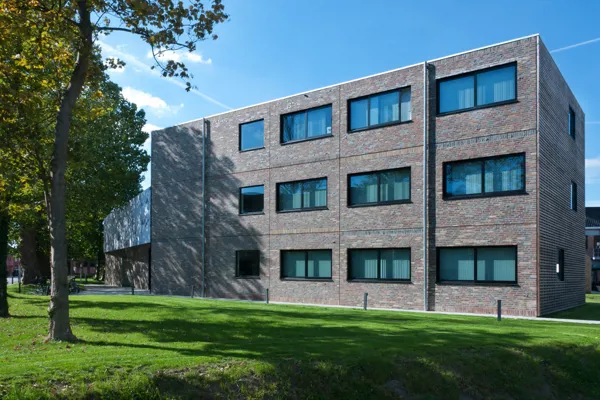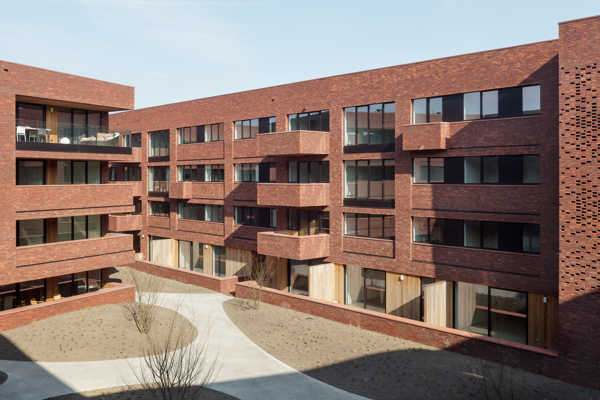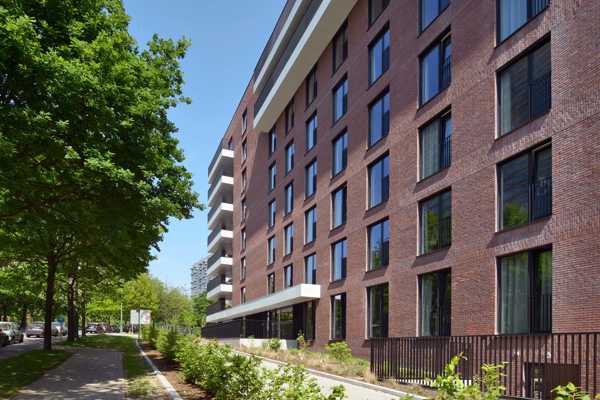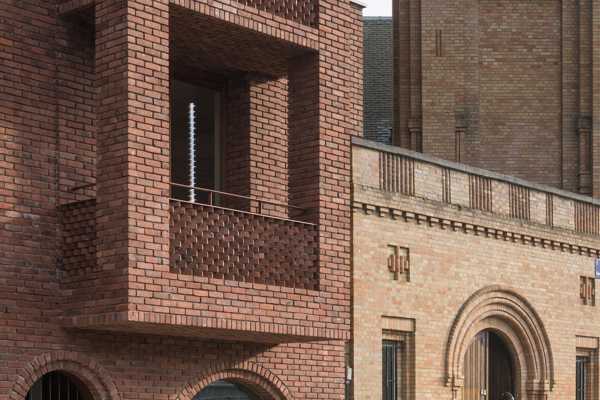Facing bricksBrick E
Technical data sheets
- Color description
- The colour of the body is red with strong red and red-brown to purple-blue nuances.
- Manufacturing dimensions (L x W x H)
- ca. 220x70x54 mm (LxWxH)
- Quantity / m² with a traditional joint
- 66 (12 mm)
- Number / m² with a thin joint
- 74 (6 mm)
Brick E
Red brown ecological Waal format
Brick E is a red brown (Ferro red pure) moulded brick produced using the Wasserstrich method. It carries both our Hand-Made label and the ECO-7-size label. Our Hand-Made label guarantees a strong, natural nuance. The unsanded Brick E also carries the ECO-7-size label because it is 7 cm deep, unlike the classic Waal format which is 10 cm deep.
case studie Brick E

Creativity with facing bricks defines look of office building
Brick has been and still is the most durable and timeless material
CAW Oost-Vlaanderen is in the process of constructing an office building with primary care facilities and 16 short-stay units on the site of a former brewery in the heart of Sint-Gillis-bij-Dendermonde.

Dark-red monoblock bricks respond to multiformity and diversity of environment of ‘t Sas site
The devalued industrial strip, hemmed in between railways and a canal, is being converted into a valuable district of Vilvoorde. Within this strategically located reconversion area on the edge of the European capital, we find the ‘t Sas project.

Mettewie residential care facility demands attention with striking façade elements and variation in brickwork
The construction of this new rest home which provides specialist care in Sint-Jans-Molenbeek comprises 117 individual rooms as well as 24 comfortable and bright assisted living apartments. The building is located on the corner of Louis Mettewielaan and Condorlaan.

An atypical facade inspired by the surrounding neoclassical architecture
The choice of the facing brick at the heart of architectural success
On the banks of the Quai Godefroid Kurth in Liège, an urban setting marked by a rich architectural juxtaposition, the Kurth project stands as a model of integration and harmony. Designed by Olivier Fourneau Architectes, this project combines offices and housing while ensuring a smooth transition between two emblematic buildings: a neoclassical bourgeois house and an art deco church dating from 1930. At the heart of this architectural success lies a crucial decision: the choice of the facing brick.
Continue reading
References
How to Install ?
Preparation of the construction site
- Always order the full amount of bricks required for a specific site. In this way, the entire order can be made during one production run.
- Try to have the full order supplied at one time. If this creates several deliveries, always mix a number of packs from the previous delivery with a number of packs from the new delivery. This procedure is especially recommended in case of re-order or for an additional order.
- Take bricks diagonally across the pack.
- Draw and use bricks from at least five different packs.
- For setting out, use bricks from the delivery made to the site in question. Do not exclusively use the theoretical dimensions of the brick, or samples previously supplied, or different production run from that intended for the site.
- As soon as the bricks arrive on site, check delivery tickets and certificates against the specification and order. Also check that there are no visible inconsistencies with the order.
- Do not lay bricks in freezing weather or protect the ‘fresh’ masonry with insulating mats in order to avoid frost damage to the mortar.
- In the case of prolonged dry hot weather, lightly dampen the newly laid brickwork to stop the mortar drying and curing too quickly.
- Do not lay bricks in precipitation in order to prevent mortar from running on the wall.
Avoid Efflorescence
- During and after laying, protect the newly built brickwork for a height of at least 60 cm - but ensure there is airspace between the brick face and the waterproof covering.
- Provisionally install rainwater down pipes to avoid saturation of the newly laid brickwork
- Never lay bricks in driving rain conditions

















